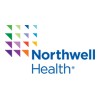
Trial of Effects of Oral Xyrem and Zolpidem on Sleep-Disordered Breathing in Obstructive Sleep Apnea...
Obstructive Sleep Apnea SyndromeTo study the effect of Xyrem (9 g), Xyrem (9 g) plus modafinil 200 mg administered the morning prior to Xyrem, positive control (zolpidem 10 mg), and placebo on the frequency and outcome of events of sleep-disordered breathing in patients with obstructive sleep apnea syndrome (OSAS).

Effect of CPAP (Continuous Positive Airway Pressure) on Lung Function in Asthmatics With Sleep Apnea...
AsthmaSleep ApneaThis is a research study of asthma and sleep apnea. Our hypothesis is that untreated sleep apnea causes inflammation in the lung, which can worsen asthma. We believe treatment of sleep apnea will reduce this inflammation, and improve asthma control. This study will help us better understand what happens to the lung and bronchial tubes before and after treatment of sleep apnea, which could benefit all patients with sleep apnea. This study involves 2 bronchoscopies.

Mandibular Advancement Device for Obstructive Sleep Apnea
Sleep Apnea SyndromesSleep Apnea1 moreThe purpose of this study was to determine how effective a custom-made standard dental splint (activator) advancing the lower jaw forward is in treatment of obstructive sleep apnea, and further to find factors for identification of those patients likely to benefit from this treatment.

Effect of Different Exercise Modalities Training in Patients With Obstructive Sleep Apnea.
Obstructive Sleep ApneaThe objective of this study was to compare different exercise modalities (moderate continuous intensity training, high intensity interval training, and inspiratory muscle training) on Apnea-Hypopnea index and oxidative stress in patients with Obstructive sleep apnea.

Portable System for Non-intrusive Monitoring of Sleep
Sleep ApneaObstructive sleep apnea (OSA) is a prevalent kind of sleep-disordered breathing affecting one-seventh of the world's population. Almost 45 percent of this population suffers from mild to severe apnea. However, in many cases it remains undiagnosed, leading to increased health risks. Sleep-disordered breathing, as seen in OSA, can have serious long-term consequences, including sympathetic nervous system activation, sleep disturbances, heart remodeling, and cardiovascular disease development. Polysomnography is the standard method for assessing sleep-breathing disorders, which requires the attachment of various sensors by a trained technician or a healthcare professional. However, if the diagnosis of OSA depends on referral to a sleep laboratory, and if the referral is reliant on symptoms of an OSA syndrome, then current screening approaches may exclude a large population of individuals at risk. Besides, the number of sleep centers and caregivers is limited, and the associated costs are high. Therefore, alternative techniques allowing home monitoring are necessary. The goal of this observational study is to evaluate the accuracy of the Kinocardiography technique in detecting apneic episodes during sleep and comparing the results with the gold standard polysomnography in 47 patients suffering from obstructive sleep apnea. We hypothesize that this device is able to detect sleep-disordered breathing events, and thus to compute the apnea-hypopnea index, with an accuracy that is close to that of the polysomnography. Participants who meet the criteria will be invited to participate in this protocol and do both polysomnography and kinocardiography records simultaneously at night during sleep.

Obstructive Sleep Apnea as a Risk Factor for Normal Tension Glaucoma and a Crucial Step in Preventing...
Normal Tension GlaucomaObstructive Sleep ApneaThe purpose of this research study is to learn more about the relationship between Obstructive Sleep Apnea (OSA) and Normal Tension Glaucoma (NTG). OSA is a nighttime disorder of the upper airway that causes an intermittent lack of oxygen while sleeping. NTG is a type of glaucoma that occurs despite the normal intraocular pressure levels, making its detection more difficult. Left untreated, irreversible optic nerve damage and extensive vision loss can result. Previous research has shown some evidence between OSA and the development of NTG. The investigators are researching whether undergoing treatment for OSA would help to improve the vascular health to the retina, and in effect, improve the early signs of visual dysfunction seen with diagnostic testing.

PAP Adherence After Diet/Lifestyle Intervention in OSA Patients
Obstructive Sleep ApneaThe aim of this study is to explore the role of diet/lifestyle intervention on Positive airway pressure (PAP) treatment adherence in patients with obstructive sleep apnea (OSA).Specifically, we evaluated the effects of a combination of PAP and weight-loss Mediterranean diet intervention on improving PAP adherence, Body mass index (ΒΜΙ), daytime symptoms, mainly sleepiness and arterial blood pressure measurements over the effect of standard care alone.

Evaluation of Prefabricated Adjustable Thermoplastic Mandibular Advancement Devices for Obstructive...
Obstructive Sleep ApneaUse of mandibular advancement devices(MADs) in the treatment of Obstructive Sleep Apnea is established, however this is hampered by high costs, long wait times and non-assured success in the local Asian setting. There are few studies which look at the use of prefabricated thermoplastic mandibular devices with a titratable component and its efficacy. In addition, it is direct-to-consumer and an economical option, thus there may be a role in the use of such devices to better select patients who may benefit and are thinking of using MADs. The investigators aim to evaluate the effectiveness of the use of Prefabricated adjustable thermoplastic mandibular advancement devices(PAT-MADs)(MyTAP) in the treatment of OSA and its role for predicting treatment success in an Asian population.

Oropharyngeal Exercises and Post-Stroke Obstructive Sleep Apnea
ApneaSleep Apnea Syndromes4 moreThis study evaluates the feasibility and effectiveness of an oropharyngeal exercise (O-PE) regimen in treating post-stroke obstructive sleep apnea, as an alternative therapy to continuous positive airway pressure (CPAP). Eligible patients will be randomized (1:1) to treatment using a pre-specified schedule of O-PEs vs. a sham control arm.

Cost-effectiveness Study of a Lifestyle Change Program for the Treatment of OSA and Obesity: Hospital-Primary...
Obstructive Sleep Apnea of AdultObesity2 moreObesity is the main risk factor for Obstructive Sleep Apnea (OSA). Nasal CPAP is the standard treatment for OSA, but since weight-loss programs are not usually offered to OSA patients, the root causes of their illness and its comorbidities are not treated. There is some evidence regarding improvements in OSA after weight reduction but whether weight reduction programs are cost-efficient has not as yet been addressed. OBJECTIVE: To determine whether an intensive weight-loss program, carried out in a project combining hospital and primary care levels, is cost-effective in the medium and long term for the treatment of obese patients with severe OSA undergoing CPAP treatment. More concretely, our objective is to demonstrate whether this program achieves sufficient improvement in OSA to allow a reduction <30/h in the apnea-hypopnea index in at least 25%, improving their metabolic profile and central obesity. METHOD: A prospective, randomized, controlled study. Control group: standard dietary recommendations. Intervention group: 0-3 months very low calorie diet, 15 days substituting three meals for low calorie shakes, from 15 to 120 days substituting 1 meal and from 120 days to 12 months on a low calorie diet while starting a progressive exercise program. Recommendations for good sleep habits will be given. The program will be carried out through group and individual sessions with the hospital dietician. After 3 months: group sessions with a nurse in the basic area. Group sessions led by hospital dietician. From 3 to 12 months: group sessions led by primary care nurse. MEASUREMENTS: At the beginning, at 3 and at 12 months: two-night home respiratory polygraph, actigraphy, anthropometric and blood analysis data including metabolic syndrome and inflammatory markers, and health related quality of life questionnaires. Direct and indirect costs of treatments, outpatient's consultations, incomes, emergency visits and patients' travel costs to medical centers.
